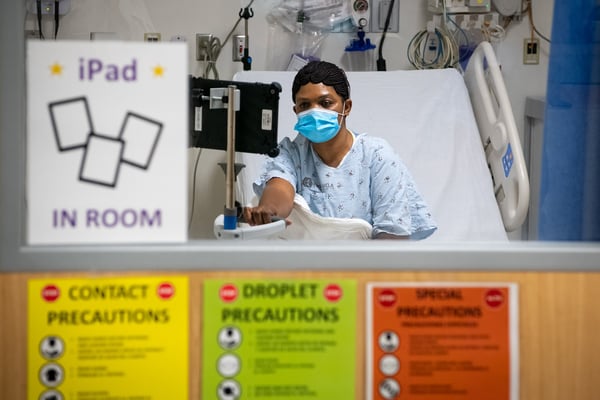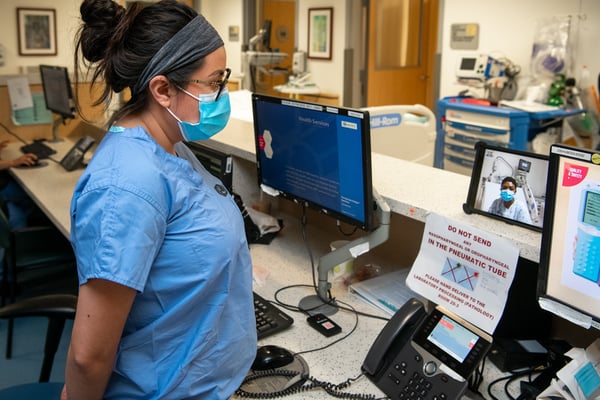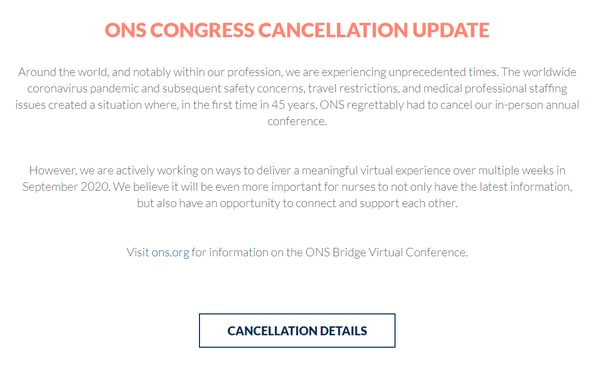The COVID-19 pandemic has changed the way we operate in many industries, but one that has been hit particularly hard is healthcare. From no visitor policies to virtual provider telehealth visits, hospitals and other healthcare facilities are turning to technology to find creative ways to support patients, deliver patient care, and improve outcomes.
During the pandemic, hospitals have transitioned to using iPads to communicate with COVID-19 patients to conserve personal protective equipment (PPE) like disposable gowns, started leveraging virtual appointments for patients to meet with providers, and provided employees with equipment to work from home.
Now that we're beginning to explore how we'll return to work, how will healthcare change after Coronavirus? How many of these "temporary" innovative solutions will forever change the way we think about doctor's appointments, screening employees, patients, and visitors, and using data to drive healthcare decisions?
Predictions for How Healthcare Will Change After Coronavirus
1. Telemedicine as the New Normal
The Centers for Medicare and Medicaid Services (CMS) have increased coverage of telemedicine services, and state and federal governments are relaxing state license requirements, which has enabled providers to practice virtually and in regions that have been harder hit. While some healthcare systems already had telehealth services, the pandemic has shown a rise in telehealth appointments, with telehealth provider, Teladoc, reporting a 50% increase in daily patient visits.
With fewer restrictions on providers, many healthcare systems have used this as an opportunity to begin using telemedicine services. Plus, they need to be extremely cautious when considering every appointment a patient may need to physically go to.
Telehealth/virtual visits help facilities:
- Save on transportation costs
- Reduce patient transport and risk of infection
- Offer more frequent appointments for patients in acute care or long term facilities
In the future, telemedicine may offer people the opportunity to meet with a provider who is physically too far away or enable those with limited transportation options the option to schedule a video appointment.
2. More Remote Employees and Departments (& Increased Need for IT)
The pandemic has created a world in which two-thirds of Americans are working from home, which is twice as many as were working from home pre-pandemic. With companies losing money, many have been forced to rethink their real estate, healthcare networks included.
When healthcare systems rethink their budgets, they will have to consider which departments truly need to be on-site for the facility to operate efficiently. For example, do the nurses or support staff in the admitting department need to be on-site? Or can they leverage VPN and access their electronic medical record (EMR) software from home?
In a post-pandemic world, the emphasis will be on reducing costs, reducing large groups, and limiting the risk of exposure to patients. IT teams will also grow for healthcare systems. As we've seen with areas where hospitals had to go online overnight, IT teams like the one at Hospital 12 de Octubre in Madrid had to figure out how to implement a VPN system for 6,000 employees all on a secure network.
With a larger remote workforce, IT departments will have more VPN requirements, more remote employee technology to support, and larger security considerations. With the move to working from home being a major change for many employees who are not tech-savvy, teamwork is essential to helping coworkers out and being patient with anyone new to video chat or OneDrive.
3. Social Distancing Practices
With healthcare networks limiting the number of staff members in meetings, they have turned to video conferencing, hosting morning rounds via Zoom or conference call, and having staff who can quickly learn how to access their shared drives from home.
With healthcare fields like dentistry just beginning to re-open, the American Dental Hygienists' Association has issued guidelines, including the recommendation that all employees will stay six feet apart when not performing treatment. With this in mind, facilities will need to hold meetings in creative ways, using video conferencing and limiting the number of staff members physically present.
4. Remote Family and Friend Visits
With the spread of a deadly virus, hospitals have been forced to implement strict visitor policies, like that of UMass Memorial Healthcare, because visitors could unintentionally spread the virus to patients and other healthcare providers. Additionally, more visitors means more PPE, which has been in extremely limited supply. With patients alone in the hospital, many facilities are turning to iPads and FaceTime calls so patients can visit with family members and friends during their hospital stay.
iPad donations have been incredibly impactful, like hospitals in the LA area who received 300 iPads for patients to connect with their families. With the addition of technology like iPads and community computers or phones, patients can communicate with family and friends throughout their days, boosting morale and helping to spread hope and joy during a difficult time. Visitor policies will likely be restricted for some time and the technology will continue to provide a risk-free source of happiness for patients around the world.

Source: The Annenberg Foundation
5. Digital Employee Screening
When thinking about returning to work, companies and healthcare facilities will likely need to screen employees for symptoms to protect vulnerable patient populations. Massachusetts General Hospital in Boston uses a digital tool to screen employees for symptoms before each shift. Once they report any symptoms, they get an email confirming they are cleared to go into work.
For other companies planning their return to work, employee screening may include temperature, or other factors, or require an attestation that they have been properly using face coverings and practicing social distancing and hand hygiene.
6. Using Technology to Conserve PPE
Due to the shortage of PPE, the pandemic has given hospital IT teams new challenges they never had to consider. How can providers communicate with patients without using PPE?
Hospitals have started placing iPads in patients' rooms, then the providers can call in to check on their patients or see if they need anything. The iPads' purpose is twofold, they can speak to in-house providers or providers in other facilities or even states.

Source: The Annenberg Foundation
7. Online Training and Virtual Conferences
When COVID-19 began to spread globally, the WHO launched a virtual training course that was viewed by 25,000 individuals in the first ten days. Online training can be disseminated quickly, inexpensively, and can be quickly adapted into multiple languages. With frequent policy changes and PPE updates, healthcare facilities have turned to online training hubs and digitizing their resources. By having a backup virtual training system, everyone has access to the most up-to-date information and that infrastructure can be used no matter what comes along.
Large healthcare conferences like the Oncology Nursing Society Congress Conference have decided to pursue virtual means of distributing the most up-to-date oncology information and collaboration opportunities amongst oncology healthcare providers.
 Source: ONS
Source: ONS8. HIPAA and Security
During the national emergency of COVID-19, the Office for Civil Rights (OCR) in the Department of Health and Human Services (HHS) issued a statement that stated healthcare providers can use any audio or video communication technology to provide telehealth to patients, as long as it's non-public facing. They have decided not to pursue penalties for those who are not compliant with HIPAA during this time, instead prioritizing the public health and greater population, helping to limit provider exposure and enable providers to triage and treat more patients more efficiently.
After the pandemic, provider visits via video conferencing will be much more common. The good news is, to implement this, many video conferencing software is already HIPAA-compliant. Zoom, for example, is a tool providers can use to meet with patients securely even after certain emergency protocols are lifted.
9. Using Data and Technology to Drive Healthcare Decisions and Improve Patient Outcomes
The COVID-19 pandemic has shown a need for improved data around healthcare worker hand hygiene compliance. Systems like BioVigil, an electronic hand hygiene monitoring and tracking system, will become standard in healthcare facilities and have proven to reduce hospital acquired infections by 83%.
Technology like RFID systems can help healthcare workers in times of crisis to track specific locations of supplies and keep an accurate record of supply and needs. This can help track PPE and help to prevent shortages in future times of pandemic.
During times of crisis, innovation often shines through. When people are challenged to use their limited resources in creative ways, incredible breakthroughs can happen. Technology has the potential to reshape healthcare and provide incredible opportunities to improve patient outcomes and minimize provider risk. In the coming months, we will see how facilities are implementing what they've thrown together during the national emergency, and how the new normal forms for the landscape of patient care.
%20(1).png)
Better meetings start here
From huddle rooms to boardrooms and everything in between, we’ve got you covered with solutions that take teamwork to the next level.
Shop Solutions